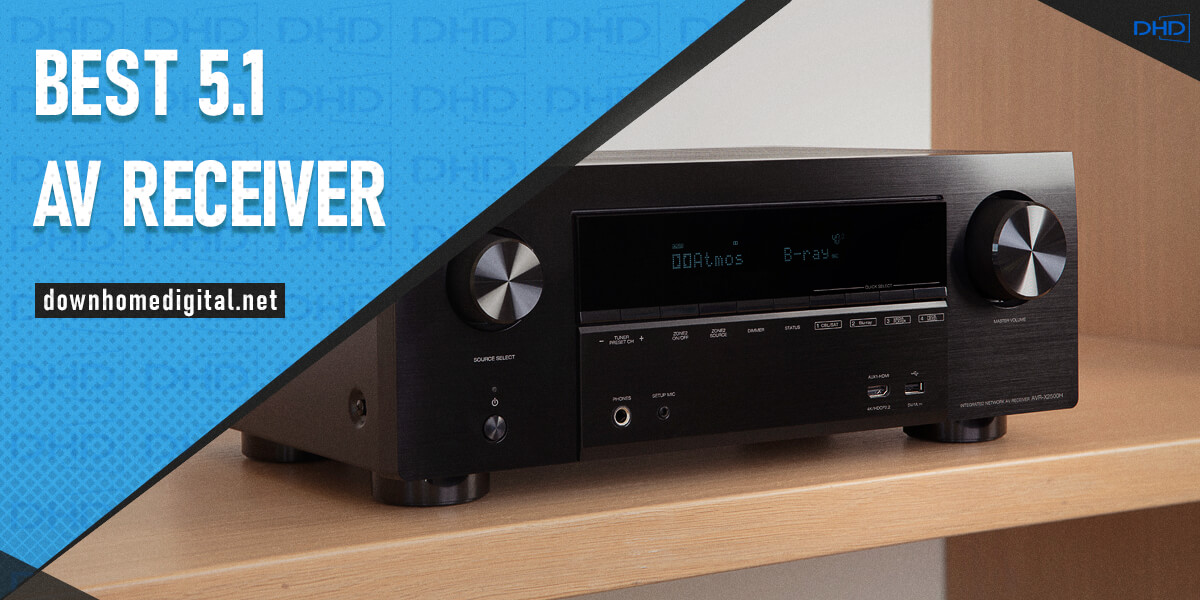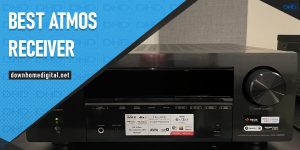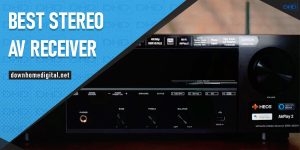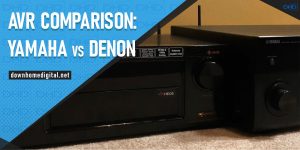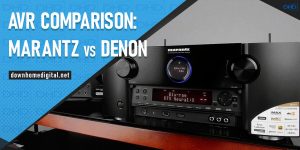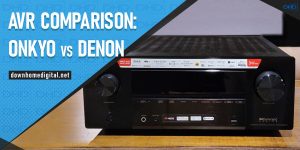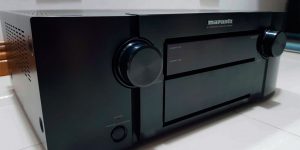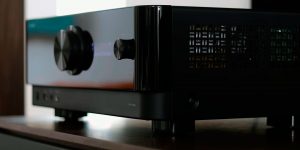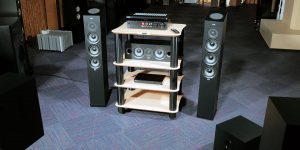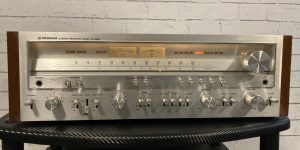At some point, the day comes for every owner of a modern TV when there is a desire to improve the image quality and sound or add surround effects. And most often, the easiest and relatively inexpensive solution is to buy an AV receiver. But how to choose the best 5.1 receiver out of plenty of offers? I will tell you about it in my review and help you choose the most optimal device.
AVR plays one of the leading roles in home theater. And the 5.1 models are a good example of relatively inexpensive and affordable features. Yes, audiophiles will probably say that this configuration is entry-level, but I think there are many decent options among these devices, which sounds fantastic. Well, before reviewing the models, I will tell you in more detail what a 5.1 channel system is and how exactly I tested the selected receivers.

5 channel AV receivers comparison table
| Name | Channels | Power output | HDMI in/out | Bluetooth/Wi-Fi | Review |
|---|---|---|---|---|---|
| Denon AVR-S670H best overall | 5.2 | 75W/8 Ohm, 100W/6 Ohm | 6/1 | yes/yes | Review |
| Yamaha RX-V385 budget | 5.1 | 70W/8 Ohm | 4/1 | yes/no | Review |
| Marantz NR1510 smallest receiver | 5.2 | 50W/8 Ohm, 60W/6 Ohm | 6/1 | yes/yes | Review |
| Yamaha RX-V4A also a great choice | 5.2 | 80W/6 Ohm | 4/1 | yes/yes | Review |
| Onkyo TX-SR393 with Dolby Atmos and DTS:X | 5.2 | 80W/8 Ohm | 4/1 | yes/no | Review |
What are 5.1 channel systems?
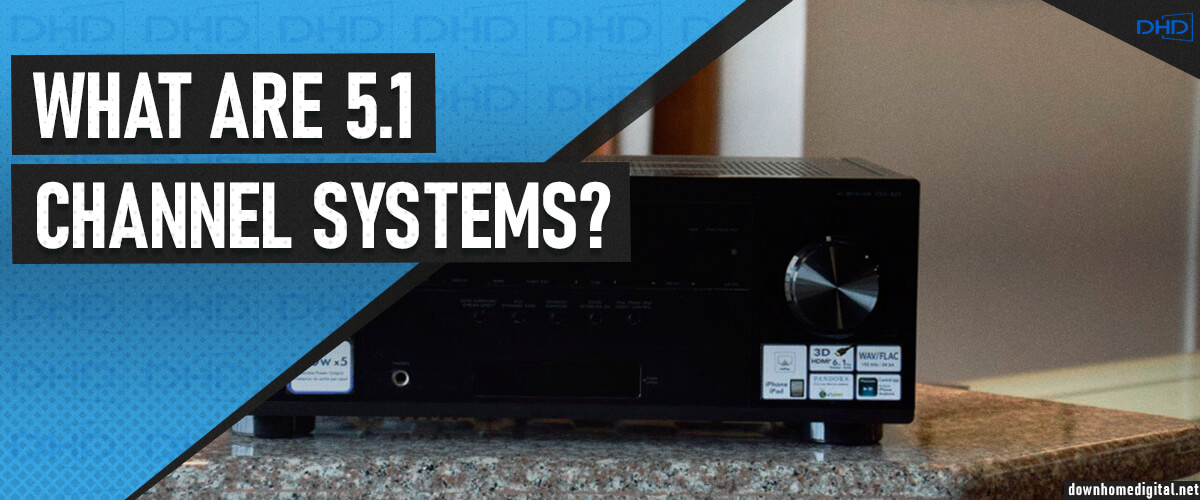
A 5.1 home theater system is one of the most common configurations. Most receivers (from entry-level to premium level) of various brands are designed in 5.1 or 5.2 configurations. And believe me, you will definitely choose the best 5.1 receiver among such abundance.
This configuration has five speakers to create pretty realistic sound quality. The way how the sound output is distributed to each of the five speakers is as follows:
- Central: middle or voice sounds
- Front Left and Right: sounds of all kinds except bass
- Rear Left and Right: ambient sounds
- “.1” refers to the subwoofer: it outputs all sounds with frequencies up to 100Hz. There can be two subwoofers. This is used to create a deeper sound stage by increasing the amount of bass and positioning the sources at different points in the room.
Although there are many ways to create this configuration, the ideal one sees the front left and front right speakers at an angle of 22-30 degrees from the center/TV speaker, and the surround sound speakers are at an angle of 90-110 degrees from the central/TV speaker.
5.1 surround sound has become a standard for home multimedia systems. Such a configuration does not cost much, but it guarantees a whole new experience of watching movies.
What is the difference between a 5.1 and 5.2 receiver?
At a basic level, 5.1 systems are standard. However, this configuration may not be enough for large rooms, even with a right 5.1 AV receiver. If there is a lot of space behind your listening area, surround sound may not be as spacious as in small rooms. In this case, I advise you to consider speaker configuration 5.2. It is the same as the previous version, but there are two subwoofers. Increasing the number of subwoofers will constantly dramatically improve the bass reproduction in any room and create a more significant depth in the sound stage.
How I picked and tested 5.1 receivers
The testing stage is quite essential for assessing the sound quality and performance of receivers. Therefore, in order to unleash the potential, I have the following device configuration for my 5.1 receiver reviews:
- CD player SACD 30n
- Blu-ray player Sony UBP-X700
- Speaker wire – AudioQuest Type-9
- Speakers for the movie – Klipsch RP-8060FA (used 5.1)
- Stereo speakers:
- Polk Audio Monitor XT60.
- Q Acoustics 3020i.
- Q Acoustics 3050.
To fully appreciate the sound of the receivers, I selected quite famous tracks of authority artists from different sources:
- Bob Marley & The Wailers – Turn Your Lights Down Low – Deezer;
- Arctic Monkeys – Do I Wanna Know – SoundCloud;
- Radiohead – The National Anthem – Spotify;
- The Weeknd – The Hills (CD player);
- Mahler – Symphony No.2 (CD player);
- Led Zeppelin – Ramble On (CD player);
- Jacky Terrasson – Reach (CD player);
- Mark Nauseef – With Space in Mind (CD player).
And in order to appreciate the effects of surround sound in the video, I chose a film with good dynamics and a vast number of special effects – Spider-man: Homecoming. And now, let’s move on to the most exciting part of my review, where I have prepared worthy models of 5.1 receivers from various brands for you.
Best 5.1 Receiver Reviews
Denon AVR-S670H – best overall

I want to start my review with the Denon AVR-S670H model, which I unequivocally ranked among the leaders in the test results. The model is representative of the “S” lineup, but it is endowed with modern features of the “X” series. Taking into account the release in 2023, the functionality of the 5.2 AVR is quite wide, and in combination with an affordable price, it is the optimal ratio to get first place in my rating.
The receiver is a 5.2 system and is second only to the premium Marantz NR1510 of my selection in terms of power, providing the listener with 75 watts (8 ohms, 20 Hz – 20 kHz, 0.08%, 2 channels). This is a good figure, considering clarity suffers little at peak volume. However, the receiver overheats a bit during prolonged use, which is quite acceptable for its price category and definitely not as much as other models of my selection. This is due to the relatively low price, which implies using cheap plastic in the construction. Nevertheless, I was satisfied with how the AVR-S670H front panel controls and buttons work; they don’t cause the feeling that they are about to fall off the case, and the volume doesn’t skip the desired value. A great rarity for inexpensive models.
The Denon AVR-S670H has the most HDMI ports (6/1) on my list. Only the premium Marantz NR1510 is as good in this sense but has a worse interface. 3 of the 6 connectors will let you enjoy 8K video since they have version 2.1. Add to this HDCP 2.3 and eARC, ALLM, QFT, and VRR for gamers, and you have a modern device that won’t need upgrading for years.
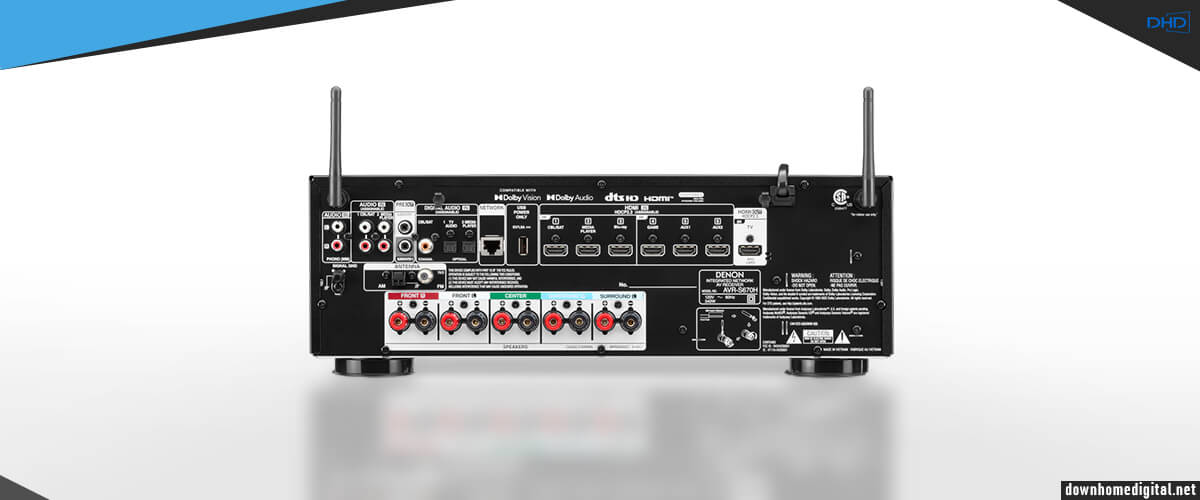
As for surround sound, this model supports Dolby TrueHD or DTS-HD Master Audio 5.2 from Blu-ray discs, streaming services, and TV. Nevertheless, I can single out its AVR-S670H’s particularly high-quality soundstage for the abovementioned category. It is full of detail and clarity, accentuated by the brightness and dynamics of the brand’s particularly distinctive tone. The Audyssey MultiEQ calibration system is also optimal (the premium Marantz uses it as well), which required no additional action on my part to get an automatic good level setting that will satisfy most non-nuanced viewers. I turned on Don’t Look Up and enjoyed the viewing experience. I didn’t have to adjust the sound on dialog and the more dynamic moments (you know, when you’re sitting with the remote in your hands and turning it up louder and down), and at the moment of the asteroid’s arrival, when the frames changed quickly, bringing their soundscapes, I was impressed with the clarity and detail. Of course, your house won’t be trumpeted for bass, but the sound was balanced perfectly in a studio of about 300 square feet. I recommend using Dialog Enhancer to enhance the dialog experience when watching movies; it makes a big difference in the quality of the viewing experience.
As for stereo, in addition to wired connectivity, it can be provided via Wi-Fi, Bluetooth, Apple AirPlay 2, and HEOS multi-room. AVR-S670H is not the only owner of such technologies in the rating, but one of the few. It supports streaming services (not built-in) and voice assistants, and the signal quality is pretty good. The only thing to note is that Bluetooth doesn’t support AptX and AAC codecs, which I find odd for a recently released model.
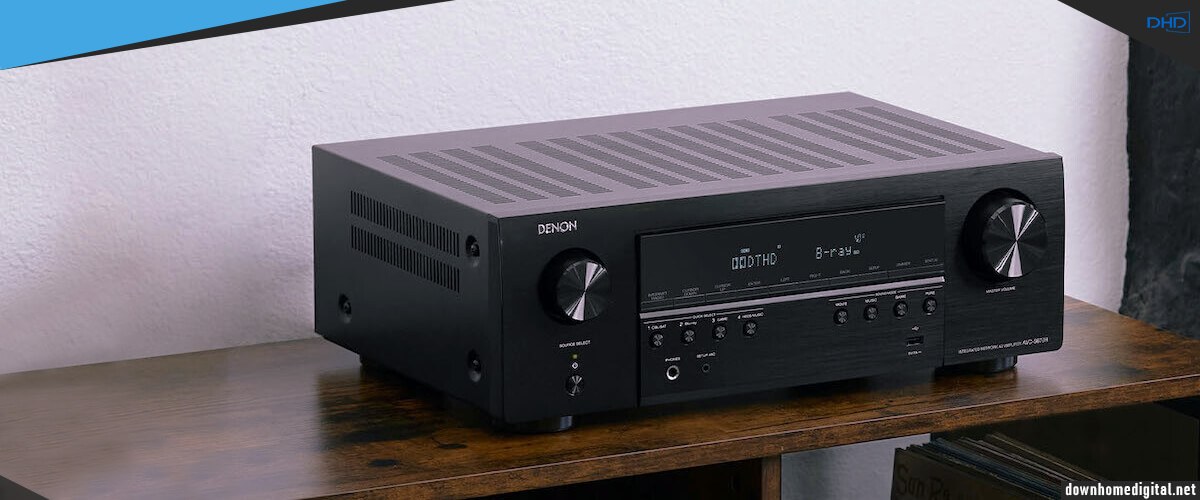
I would also like to share with you the testing of Polk Audio Monitor XT60 speakers in combination with the AVR-S670H receiver. I really liked how they conveyed Denon’s special warmth. They are loud enough for the model in question, and if you are patient while the speakers adapt and are saturated with current, you may be satisfied even with the bass level (I have enough, although I like low frequencies in high volume). The detail transfer is excellent; the sound caresses are not blended or lost in space. And they have a nice price.
The Denon AVR-S670H is the best 5.1 AV receiver of my rating in terms of value for money. You’ll get 8K video with it, which the premium Marantz NR1510, which costs more, won’t give you. It’s similar in features to the Yamaha RX-V4A but differs from the latter with more HDMI ports and warmer, more dynamic sound. It’s a state-of-the-art 2023 device that provides access to wireless technology and won’t need upgrades for years.
Yes, it’s made of inexpensive materials, gets a little “tired,” and overheats, so that it will need your attention and extra ventilation. The receiver won’t give you top channels like the Onkyo TX-393, but for a 5-channel system, I even consider it overkill. All in all, I honestly consider it an excellent option for users with small apartments. If you’re willing to spend around 500 dollars (which is a lot within my selection) and still get decent quality, it’s a reasonable choice.
| Power |
|
| HDMI features |
|
| Video features |
|
| Network |
|
| Surround sound processing |
|
Pros
- The power matches more expensive models, and the receiver sounds clear even at high volume.
- The list has the largest number of HDMI ports (identical to the premium model in the rating).
- Three 8K inputs with support for the latest HDMI 2.1 specifications.
- Pretty extensive wireless capabilities with high-quality streaming for the selection.
- The Dialog Enhancer feature enhances the dialog experience.
Cons
- Heats up a bit under prolonged load.
- Bluetooth does not support AptX and AAC codecs.
Yamaha RX-V385 – budget
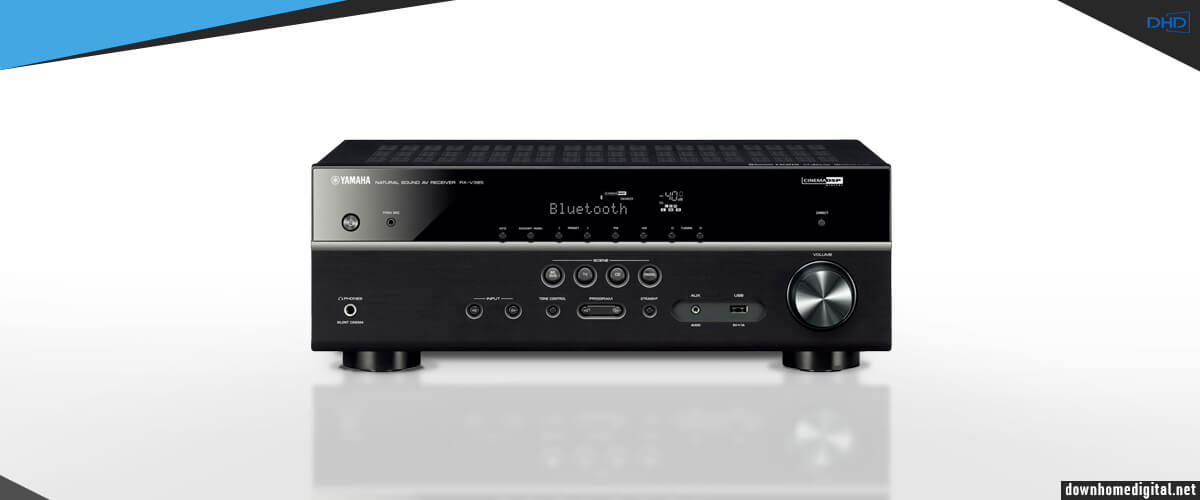
In the line of Yamaha receivers, there is a budget RX-V385. The excellent power of this device immediately attracted me – 70 W/8 Ohm or 145 W/6 Ohm. Moreover, the receiver works with Dolby TrueHD and DTS-HD Master Audio with three BAC-384 kHz / 32-bit DACs. And these are already the indicators of the best budget receiver. I preferred it to the Onkyo TX-SR393, which has a similar price in my rating. Although RX-V385 is inferior to the latter in terms of power, in practice, it sounds much nicer, cleaner, and of higher quality.
The receiver looks very good, especially against the background of more or less identical designs of the inexpensive lineup. The upper part of the front panel shines with gloss, and you can see the menu quite well on it. In general, I’m impressed by the quality of Yamaha, which, even for budget models, tries to make it feel like a decent piece of equipment. Although, of course, you can’t expect to hold a reliable device in your hands; the case just sags under your fingers, so be careful when installing it.
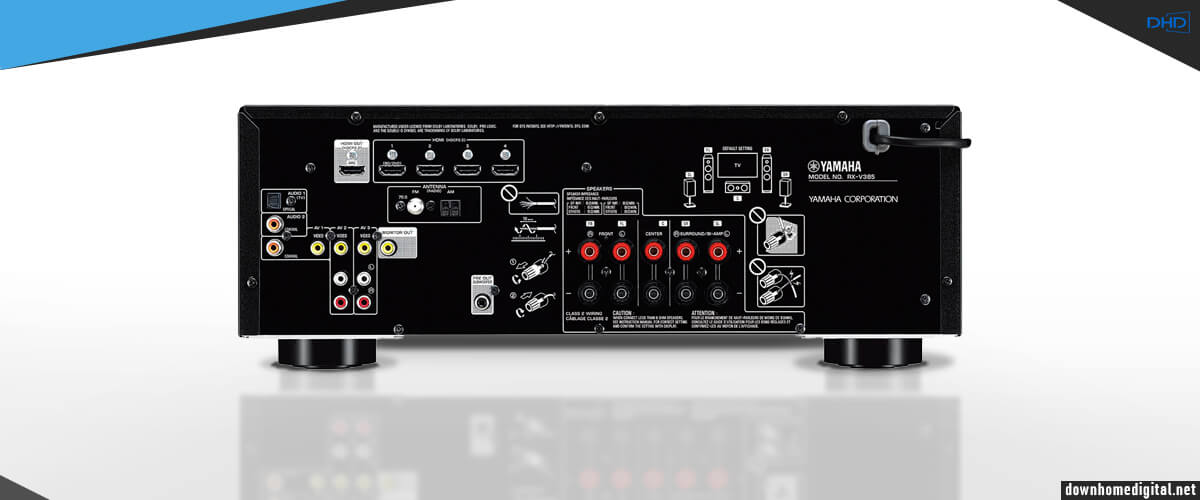
Compared to the Onkyo TX-SR393, I also draw your attention to the lack of Dolby Atmos and DTS: X decoders. But the video track is up to date, providing the viewer with modern 4K video formats for HDR10 and Dolby Vision. The RX-V385 has HDMI standby switching. This means that you do not need to turn it on to watch a video on TV from an external source connected to the receiver via the HDMI port. But the receiver does not work with long HDMI cables: the signal is not strong enough.
Now, I want to move on to the sound. It’s traditionally detailed, large-scale, and clean. It provided a wide soundstage thanks to the improved sound return channel. In addition, the firmware has many presets for movies and music, which are found on more expensive Yamaha receivers. I want to note the crystallinity and coldness of the brand sound, as I do it every time. Although, in my opinion, this is not something you should listen to when choosing a cheap receiver; nevertheless, in movies, it sounds quite lifeless (for my personal taste), but it is certainly of high quality for the category in question. Here, I have no questions.
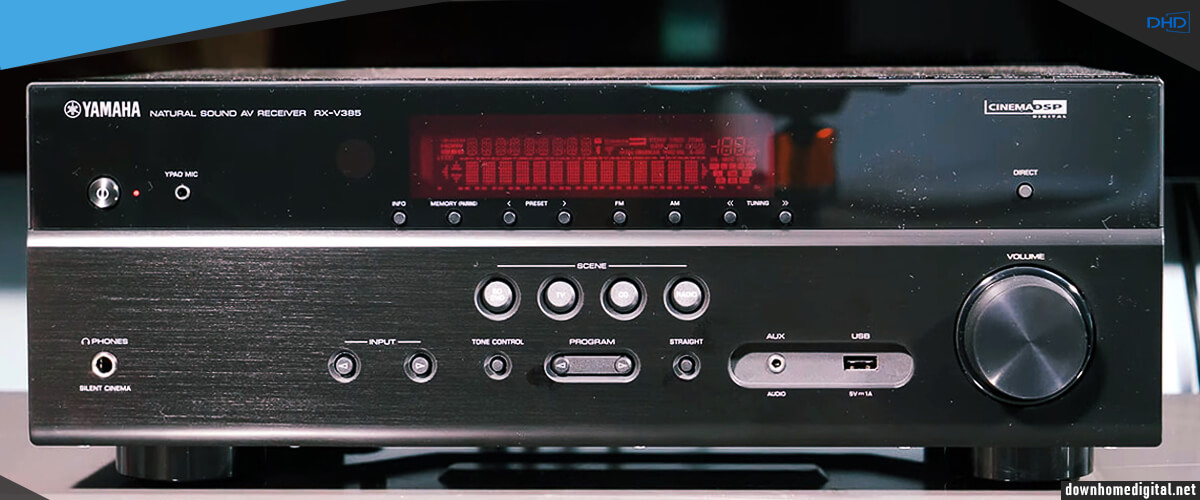
I liked the Yamaha RX-V385 less in music, as I prefer jazz and classic rock. But in heavier genres, where you want to hear the nuances of solos with distortion – Yamaha has no equal. There is a seven-band equalizer with separate treble and bass controls for manual adjustment. What I particularly liked was the separately implemented settings for the subwoofer and the 3D sound for the two-speaker system. This allowed me to customize the system’s sound as flexibly as possible.
If you’re looking for optimal inexpensive shelf speakers to complement your receiver, I recommend the Q Acoustics 3020i. They sound much better than many of the alternatives and deliver the chintzy Yamaha sound in a particularly pleasing way. I really liked the magnetic grilles, and even their bass is pretty good. Given the small output of the RX-V385 and the ability to add only 1 sub, they may well replace your stereo speaker system in a small room (about 150-200 square feet).
The Yamaha RX-V385 is the best budget 5.1 receiver on my list, as it is a pretty balanced unit for its money. It’s a good 5.1-channel system with a sophisticated feature set that will fully satisfy the needs of many home theater enthusiasts. Yet, this top 5.1 4K receiver is simple and straightforward to use.
Yes, you don’t have 2 subwoofers, and there’s no Wi-Fi and few HDMI ports, but in terms of sound, it’s far superior to models with an identical price point. Even compared to the Onkyo TX-SR393, featured on my list as the sole owner of Dolby Atmos technology, the RX-V385 sounds much cleaner and more pleasant, which won my respect. Just be careful when installing it for the case; it just crumples under your hands and gives your receiver decent ventilation.
| Power |
|
| HDMI features |
|
| Video features |
|
| Network |
|
| Surround sound processing |
|
Pros
- There is a function to switch HDMI to standby mode.
- You can control the frequency ranges thanks to the Bi-amp Connection function.
- There is Bluetooth that works with the Compressed Audio Enhancer function.
- There is a seven-band equalizer with separate treble and bass controls for manual adjustment.
Cons
- The casing flexes under your fingers.
- Doesn’t work with long HDMI cables. The signal is not strong enough.
- Heats up a lot, even when listening to music in stereo.
- No Wi-Fi.
Marantz NR1510 – smallest receiver
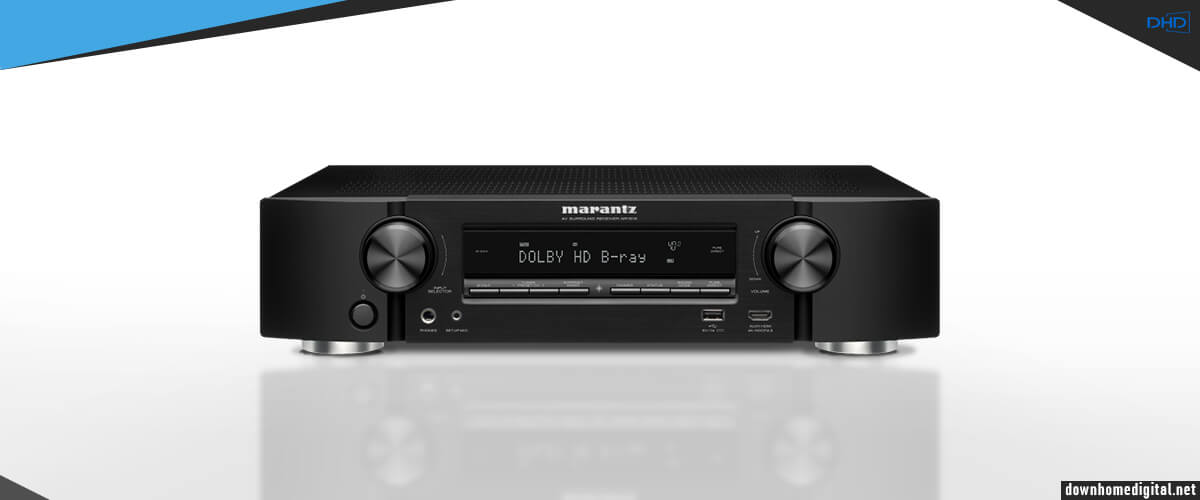
With the Marantz NR-1510, the brand continues the tradition of ultra-compact home cinema receivers. At only 5 inches tall, this 5-channel receiver is no taller than a conventional stereo amp and, I think, fits easily into any living room. But it is inferior to all receivers in my rating in power, which is only 50W (8 ohms, 20 Hz – 20 kHz, 0.08% 2ch Drive), which its size can explain. However, this is more than enough for small rooms. I should also note that this model uses quality amplifiers on discrete elements. So I expect quite a good sound quality from it.
NR1510 is the most expensive on my list. After reading the review, you will have a reasonable question: what is the reason for it because it is inferior to the leader of the selection, Denon AVR-S670H? It’s simple. When it comes to Marantz, you should hear something like Louis Vuitton. I mean that the quality of construction, internal components, and, as a result, the sound of any equipment brand is optimal for buying within the category in question. Even to the touch, the model is superior to all the ones on my list, although it has quite a bit of plastic. But if you could feel the controls and buttons on the body of the NR1510 and any other receiver on my list simultaneously, you’d know what I’m talking about. And I liked the well-designed remote, which doesn’t evoke a complete sense of primitiveness like the others.
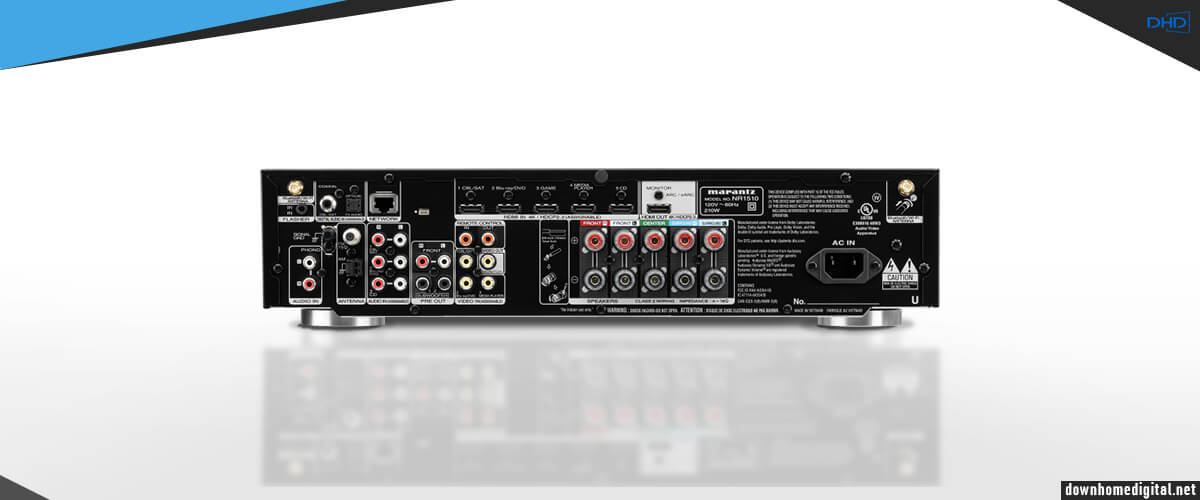
As for surround sound, the NR1510 does not support Dolby Atmos and DTS:X formats. But everything is not so bad, as there is support for Dolby TrueHD and DTS-HD Master. NR1510 can decode ALAC, FLAC, and WAV up to 24 bits/192 kHz and DSD. It also has built-in dual-band 2.4GHz/5GHz Wi-Fi, is compatible with the HEOS multiroom system and streaming services, and can provide data transfer via Bluetooth, AirPlay 2, or a proprietary app. Vinyl enthusiasts will be pleased to know it has a built-in MM/MC phono stage.
Regarding video functions, the Marantz NR1510 is fully prepared for 4K/60Hz/4:4:4/HDR signals. The color gamut level is BT.2020 compliant. In addition, the unit supports game mode ALLM. And as a bonus, I will note that this AVR works with Alexa, Google Home, and Apple Siri voice assistants.
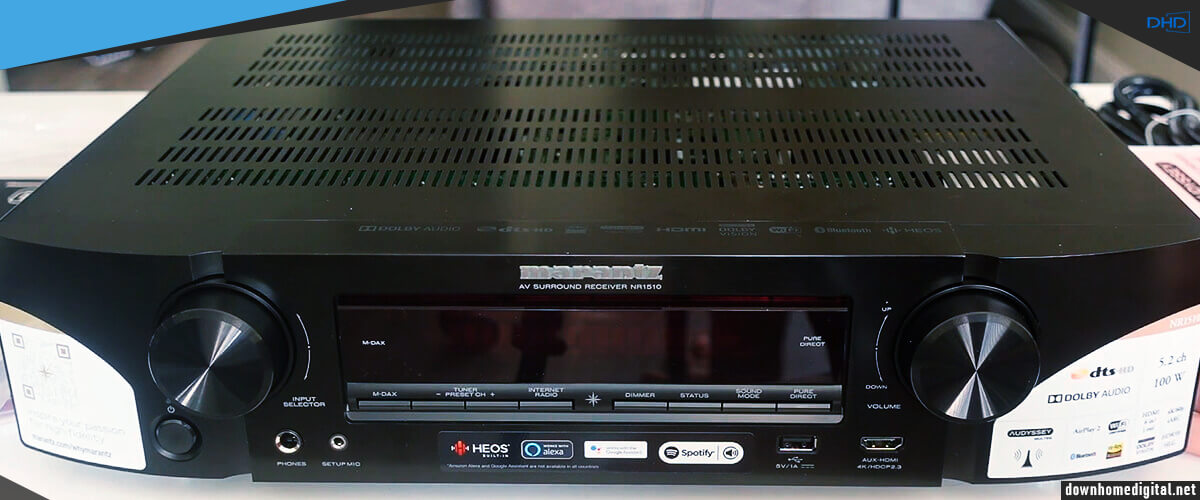
The NR1510 boasts 6 HDMI inputs with HDCP 2.3 support, 4K upscaling, the ability to control a second music zone, and compatibility with the Audyssey MultEQ Editor tool app.
When testing the musical capabilities, I heard excellent detail and emphasis on the high midrange frequencies, a hallmark of Marantz devices. Given that we’re looking at a receiver for a maximum of 150 square feet (the size of one of my studios) and talking about the lowest wattage possible, the sound still reaches every nook and cranny of the space with equal intensity. The Marantz generally has an even warmer and softer sound than the Denon. I’d say it’s almost “tube-like, ” making watching movies as realistic as possible. I watched a couple of episodes of the documentary John Lennon: Murder Without A Trial and appreciated the Marantz NR1510 to the fullest. There’s a lot of footage from old videos; the background sounds are like police sirens, monologues, and more, so I felt fully present in the events on the screen.
The Marantz NR1510 is a great buy if you’re looking for an inexpensive, narrow-profile receiver for a small room. This is its main advantage, along with the high-quality components used in its construction and, as a result, the excellent sound quality that stands out from the rest of the selection.
Of course, it loses in terms of power and does not have modern video technologies, but all its declared functions work at a high level. Realizing how Marantz appliances are created, you may well have the luxury of paying more even for lesser features. However, if your floor space allows for a more powerful unit and you want more features, consider the full-size Denon AVR-S670H.
| Power |
|
| HDMI features |
|
| Video features |
|
| Network |
|
| Surround sound processing |
|
Pros
- Compact design for limited spaces.
- Quality components are used in the construction.
- The largest number of HDMI ports on the list (6/1).
- Works great with Bluetooth headphones and creates a stable connection.
- A multi-room system using HEOS or AirPlay 2 works just fine.
- The smallest power rating (50W) is only suitable for small rooms.
- Provides 4K resolution video only.
Cons
- The smallest power rating (50W) is only suitable for small rooms.
- Provides 4K resolution video only.
Yamaha RX-V4A – also a great choice
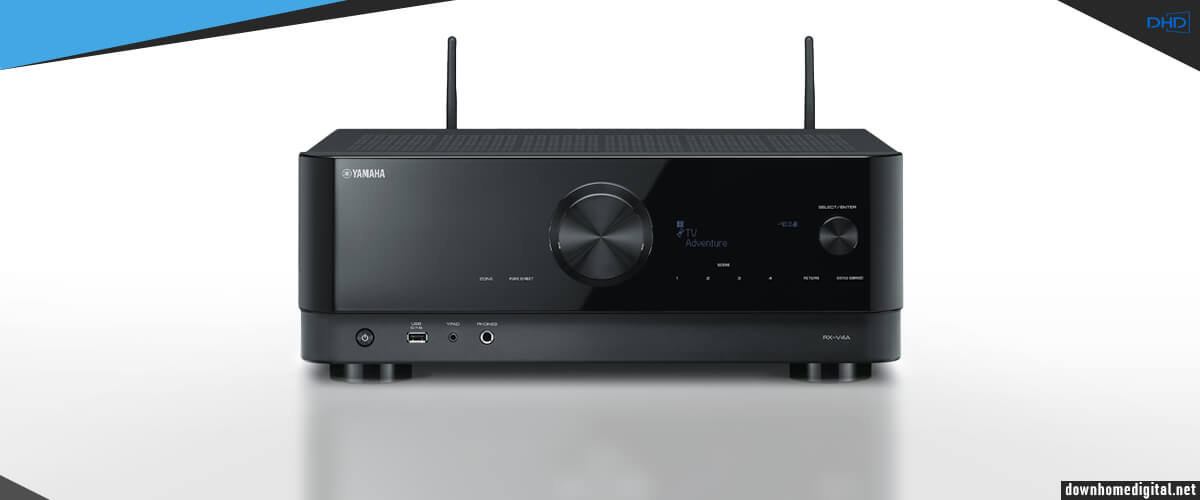
The Yamaha RX-V4A allows creating a modern and versatile home theater system for a fair price point. This is a worthy alternative to the leader of my selection, Denon AVR-S670H, which didn’t make it to the first place due to a combination of some data and my personal perception.
Let me say right away that I am not a fan of the glossy RX-V4A case. Yes, many people think it’s beautiful, and I won’t even argue. But for me, it’s just a nightmare, as I’m constantly working with technology, and after half an hour, all this beauty is covered with my fingerprints. The LCD is just nowhere good; you can’t see it from three steps away. But the build quality is still good, as usual with Yamaha. Since such things are a matter of taste, I leave it to you to judge for yourself.
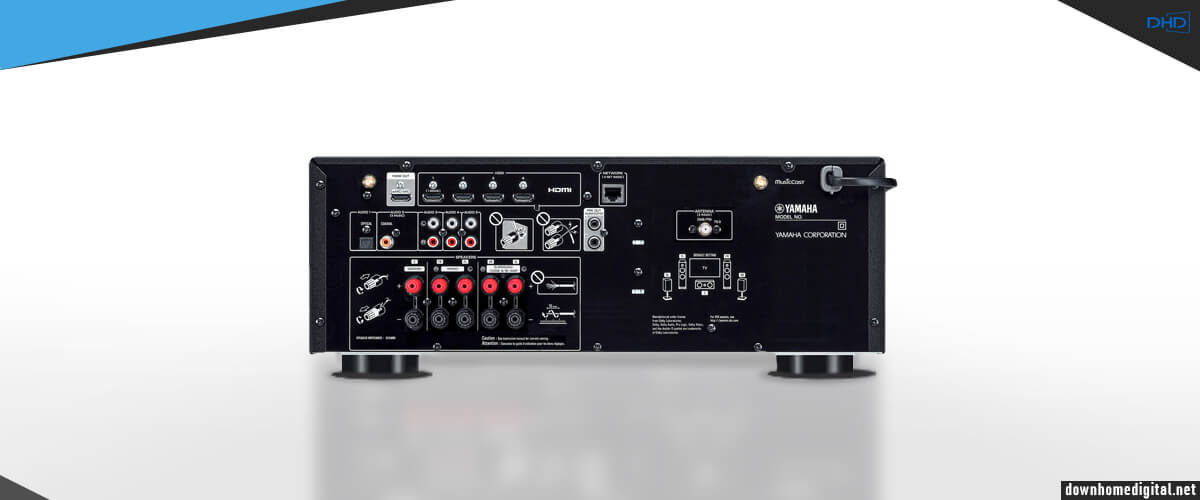
This device has a 5.2 configuration, which can be considered the optimal solution for medium-sized sounding rooms. With a rated output power of 80 W/6 Ohm, the Yamaha RX-V4A can effectively work with floor-standing speakers. The video path of this receiver is a pleasant surprise. There is full support for 8K/60 Hz video and even Dolby Vision technology. Here, it is inferior to the AVR-S670H as it only has 4/1 HDMI ports.
I started by listening to music and exploring different modes. The sound is flat and completely inexpressive in Pure Direct, bypassing all possible processing. When I switched to Enhanced mode, the receiver only emphasized the bass. However, the Neo: 6 mode is most interesting because it effectively distributes music to all speakers without changing timbres or placing the center too far ahead of the sound stage. Still, it handles streaming services very well, works with voice assistants, and I like its MusicCast as much as the HEOS. Still, it handles streaming services very well, works with voice assistants, and I like its MusicCast as much as the HEOS.
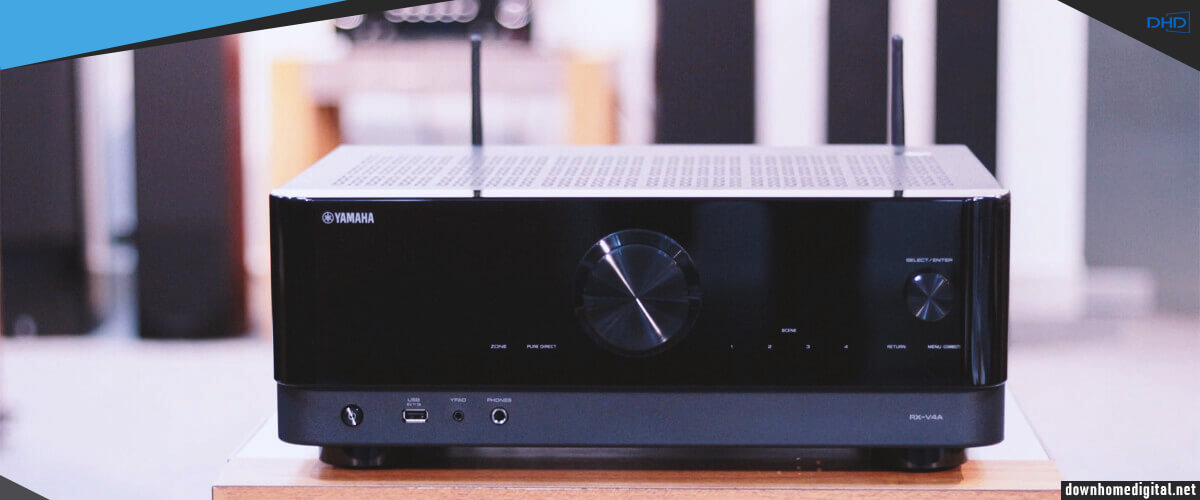
The first detail that confused me in surround sound: the RX-V4A never registers with Dolby or DTS. Therefore, I must use the Surround Decoder mode, which is responsible for the distribution of effects. Despite this, Yamaha is good at creating a sound space where you feel at the center of the action. Compared to the Denon AVR-S670H, the RX-V4A cannot attenuate effects. So I’ve often noticed that the effects seem to be glued rather than being placed here and there in the room space.
If you know of speakers that can improve your system’s overall sound and unlock your receiver’s potential, then for the RX-V4A, I recommend the Q Acoustics 3050. While they are quite inexpensive, their slightly tapered design and fairly full bass (if you choose to use this pair without a sub) will suit those who want to save room space. Don’t jump to conclusions after installation; the Q Acoustics 3050s sound better afterward.
The Yamaha RX-V4A is one of the best 5.2 receivers available and an excellent option for getting started without spending a fortune. Whether playing 5.1 soundtracks or enhanced stereo, it creates a clean, immersive, no-frills atmosphere. You can create pseudo-3D sound and watch 8K with it, and the MusicCast multi-room audio is as good as the famous HEOS.
For me, the RX-V4A’s sound is inferior to the Denon AVR-S670H because of coldness and some parameters that the average user probably won’t notice. But the receiver also has fewer HDMI ports than the leader of the selection. This model will suit you if you are an ardent fan of the brand’s specific sound.
| Power |
|
| HDMI features |
|
| Video features |
|
| Network |
|
| Surround sound processing |
|
Pros
- There is proprietary MusicCast multi-room technology, which is as good as HEOS.
- All stated functions work well.
Cons
- Fewer HDMI ports (4/1) than Denon AVR-S670H.
- Compared to the Denon AVR-S670H, the RX-V4A does not know how to attenuate effects.
- The RX-V4A never registers with Dolby or DTS.
Onkyo TX-SR393 – with Dolby Atmos and DTS:X

Onkyo TX-SR393 is a budget device that operates up to a 5.2 configuration with 80 W/8 Ohm or 155 W/6 Ohm power. Dolby Surround and DTS Neural: X features are available for all realized configurations, regardless of the number of speakers and the format of the initial soundtrack. But the main advantage of this model is support for Dolby Atmos and DTS:X, which distinguishes the receiver not only from the alternative budget Yamaha RX-V385 but also from all other models in my review. However, the manufacturer’s configuration for these technologies is 3.2.2, and I’m not a fan of such experiments.
The TX-SR393 is a lumberjack. Simple, unpretentious, unassuming, and unattractive. It doesn’t even have a drop of Yamaha charm. But those who are not fussy about design may like it even more, as all the buttons work as they should, and the LCD is very well viewed. If I were asked, I would prefer simplicity and reliability to flashiness and glossiness. It’s like the remote control was made for a child or an old man; it’s so primitive. It’s like it came to us from the 2000s, which is quite possible, by the way. Also, the speaker terminals are not very stable and lose contact quickly.

And one of the most interesting facts for me was that the AccuEQ calibration system takes height speaker into account and corrects the phase for coherent rendering. Such functionality is not available in competing receivers, for example, the Yamaha RX-V385.
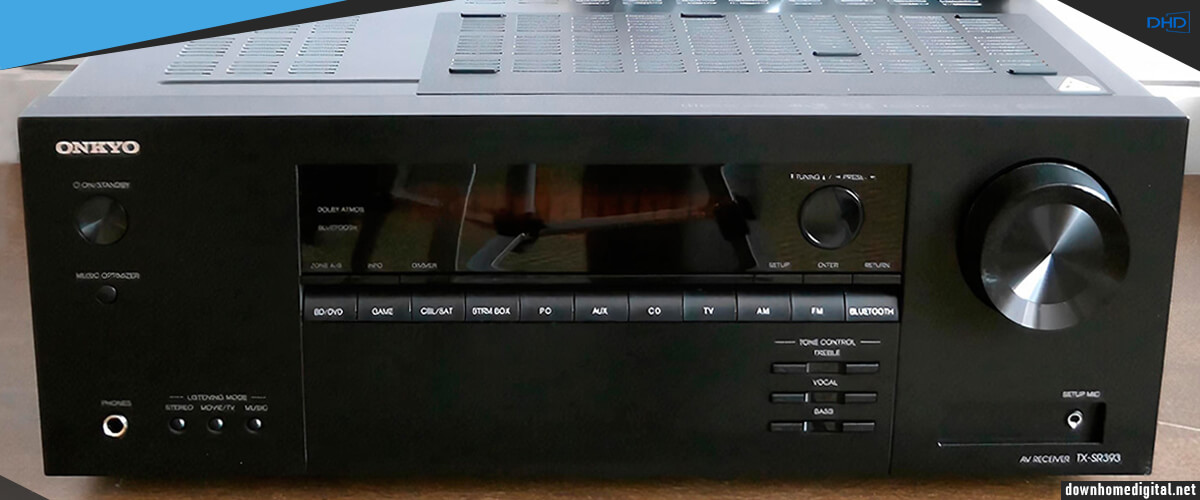
Speaking of sound, there is only one thing to say: the receiver has the ability to decode Dolby Atmos and DTS:X. I don’t know why Onkyo did it because the system doesn’t sound like a full-fledged 5.2.2, but TX-SR393 is now a celebrity because everyone wants to pay three cents and get three-dimensional sound. Whether it’s worth it or not is up to you to decide. I believe it’s just a name. However, I won’t lie that I was quite satisfied with imitating the upper channels by DTS Virtual: X and Dolby Atmos Height Virtualizer. It doesn’t match a full system either, but in this case, at least it’s clear why – the ceiling speakers are simply missing. But if we compare it with the Yamaha RX-V385, the movie sound is quite ordinary, even flat.
When listening to music, the receiver produced surprisingly good sound. The bass was quite rich, although it sounded rather thick. No, you can hear everything, and the background is not annoying, but if you really like stereo – this receiver is not about it.
If you’re looking for a 5.1 receiver under $300 with Dolby Atmos, the Onkyo TX-SR393 is your choice. But that’s its only advantage over the other receivers in my review. To be honest, I’m not a fan of cramming features into a receiver that it can’t handle and isn’t designed for. But the fact itself will probably play a certain role for you. However, to be fair, I must admit that the presence of DTS Virtual: X and Dolby Atmos Height Virtualizer softened my general opinion, as they really simulate three-dimensional sound well.
Otherwise, the TX-SR393 is pretty mediocre: it has no Wi-Fi, few HDMI ports, and the overall soundscape is inferior to the quality of the Yamaha RX-V385. I realize that all these conclusions are subjective, but my experience allows me to judge the equipment strictly and fairly.
| Power |
|
| HDMI features |
|
| Video features |
|
| Network |
|
| Surround sound processing |
|
Pros
- Decodes Dolby Atmos and DTS:X sound range.
- The cabinet is slightly more sturdy than other models in the same price category.
Cons
- The speaker terminals are not very stable and lose contact quickly.
- No Wi-Fi.
- The 3.2.2 system doesn’t sound full-bodied for Dolby Atmos.
- The sound, compared to the Yamaha RX-V385, is flatter and simpler.
Buyer’s guide
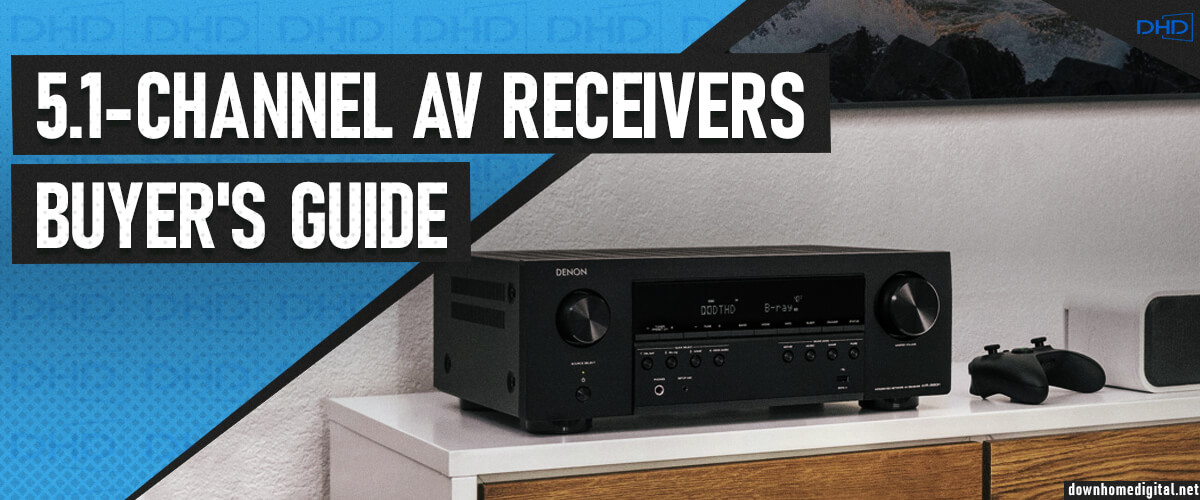
5 channel vs 7 channel home theater receivers
Receivers with a large number of channels use advanced surround sound technologies. The initial milestone of such was 5-channel devices. 5.1 is suitable for movies because surround channels create a deep and immersive sound stage. We can get 5.1 surround sound using Dolby Digital or DTS. DTS uses less compression, but this format is less standard than Dolby Digital.
7-channel audio, on the other hand, brings a little more to the home theater experience. It is the addition of surround back speakers that will noticeably improve the immersion experience. This effect can amaze, especially with soundtracks specially mixed for 7.1 sound. A prerequisite is that there is enough space for the sound to unfold correctly.
If the speakers are crowded into a small space, the effect of a 7.1 system may be worse than that of a 5.1 system. We can get 7.1 surround sound only using Dolby TrueHD or DTS-HD Master. These are already formats of a class higher, and they encode sound identical to the original of the film studio but need better performance.
Can I use a 5.1 receiver with 2 speakers?
Almost every receiver can work with the 2.0 setup. So, using two speakers with a 5.1 home theater receiver is perfectly fine. For a receiver to work nicely, you’ve got to hook up speakers, turn off the surround modes, and pick a 2-channel input.
Is 5.1 surround sound good enough?
5.1 surround sound is good if you want to hear more depth and immersion when watching movies and TV content. So, it is a worthy investment for home theaters in small- and medium-sized rooms to achieve realistic effects.
How big a room do you need for 5.1 surround sound?
When using an AV receiver for 5.1 surround sound, you should remember that you will get the optimal results in a room of up to 350 square feet. If the room is larger or you want even better sound quality, you will need to consider a 7.1 system or higher.

